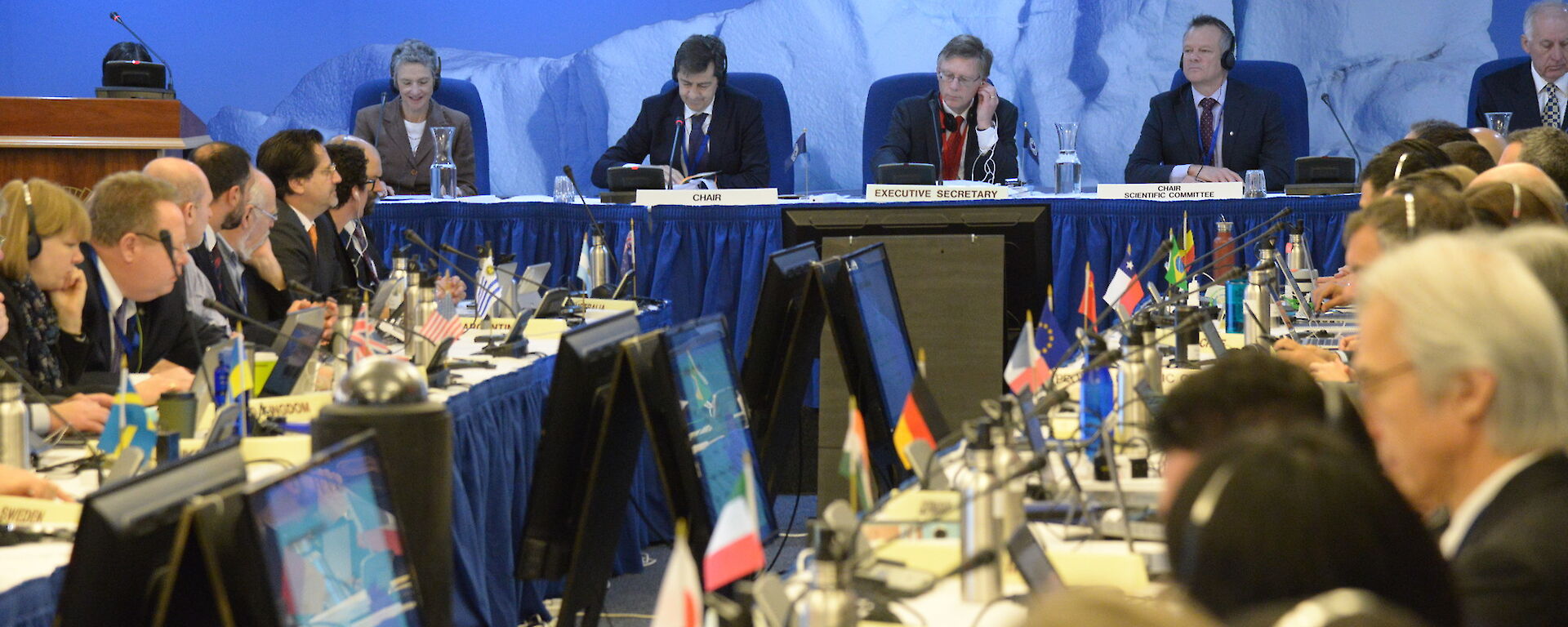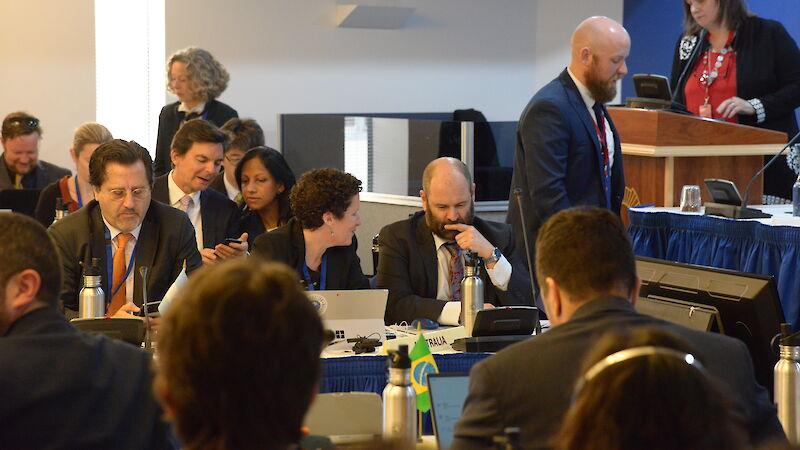Introducing the Commission for the Conservation of Antarctic Marine Living Resources (CCAMLR)
The Convention on the Conservation of Antarctic Marine Living Resources came into force in 1982 and forms an important part of the Antarctic Treaty system. Its work also complements the Agreement on the Conservation of Albatrosses and Petrels – ACAP.
The Commission for the Conservation of Antarctic Marine Living Resources (CCAMLR) was established under the Convention and it manages living marine resources in the Convention Area.
Australia’s primary goal within the Commission is to ensure the conservation of the marine living resources within the CCAMLR area. An important related goal is to enhance Australia's influence in the Antarctic Treaty system and to maintain Australia's reputation as a responsible manager of marine resources.
The Convention's objective is the ‘conservation of Antarctic marine living resources’ where conservation includes rational use. Importantly the Convention requires the conservation of Antarctic marine living resources and that decisions about rational use must be based on an ecosystem approach. CCAMLR requires consideration is given to all species in the ecosystem and to conserving ecological relationships. This was a very far-sighted and unprecedented approach at the time the convention was negotiated.
The Convention defines three principles of conservation which any harvesting activities must comply, these are:
- the prevention of the decrease in the size of any harvested population to levels below those that ensure its stable recruitment
- the maintenance of the ecological relationships between harvested, dependent and related populations, and the restoration of depleted populations, and
- the prevention of changes or the minimisation of the risk of changes in the marine ecosystem, which are not potentially reversible over two or three decades.
The delegations of Australia and the United States of America to the 35th Meeting (2016) of CCAMLR presented a paper recalling the development of the Convention and articulating what "conservation" means for CCAMLR. This paper outlined the historical context, the original intent of the parties that negotiated the Convention, and reiterated that CCAMLR is an organisation established with a broad conservation purview and function which also allows for fishing within its conservation framework.
CCAMLR members
Australia is an original signatory of the Convention and upholds its mandate in the Southern Ocean, to the south of Australia and in the Heard Island and McDonald Islands region. Heard Island and McDonald Islands (HIMI) is a sub-Antarctic island group located in the Southern Ocean, about 4,000 km south west of mainland Australia.
There are 26 commission members with voting rights and ten other parties to the Convention (non-voting). View the list of CCAMLR Members.
Australian involvement in CCAMLR
The Australian Antarctic Division is the lead agency in a whole-of-government approach to Australia’s scientific and policy involvement in CCAMLR. Other Australian government agencies involved in CCAMLR include:
- Department of Foreign Affairs and Trade (DFAT)
- Department of Agriculture, Water and the Environment
- Australian Fisheries Management Authority (AFMA)
- Attorney-General's Department (AGD)
The Australian Antarctic Division and other Australian Government agencies also work closely with fishers, conservation organisations and others in the community interested in CCAMLR.
CCAMLR meetings
The commission meets annually in Hobart, Tasmania and is supported by a Secretariat. The work of the commission is informed by a Scientific Committee.
Contact the Secretariat at 181 Macquarie Street, Hobart 7000, Tasmania Australia. Ph: +61 3 6210 1111; Fax: +61 3 6224 8744; email: ccamlr@ccamlr.org.



